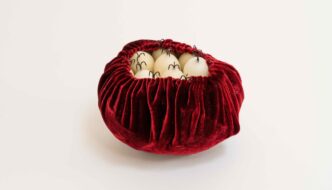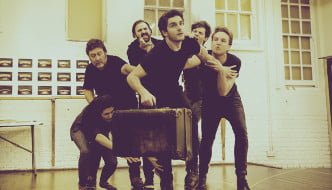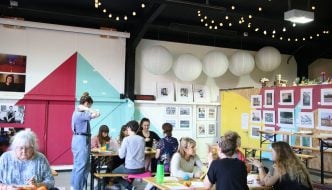An Interview with Mike Winnard, Assembly House
November 12, 2014
[Image courtesy of Mike Winnard]
From 23rd – 26th October 2014, East Street Arts opened ten venues across Leeds to offer an insight into artists’ workspaces. Spanning the course of a week it included workshops, tours, small performances and individual exhibitions before culminating in the final weekend where all venues were open to the public.
Seeing where artists worked and understanding the practice was far more inspiring than any white-walled gallery. Each studio space was crammed with materials, finished and unfinished ideas, as well as an artist sitting there making their craft.
The enjoyment for me was that the exhibition offered an opportunity to talk to current artists about the meaning of their artworks, and what it was like making a living from their craft. I gained the fantastic opportunity to talk to Mike Winnard, one of the directors at Assembly House Studios, Armley.
TSOTA: Hi Mike! So you’re one of the directors of these studios, how did you come across this rather idyllic studio space?
MW: Yes I’m a director alongside Lester Drake and Matt Wheeldon who all graduated just over a year ago from fine art courses. We came together with a large group of our friends who were looking for some studio space and we just tried loads of different options through East Street. We found a space that was actually downstairs in this complex: a really weird tile showroom. Through that space we found this one!
By then it had fallen onto the three of us to organise it all with the logistics and legal side of it. There was also a large group of us who did the practical side of things. When we got here it was disgusting! It hadn’t been used since the 80s and even though it looks rough and ready now, back then the floor was this thick (Mike indicated 5 inches) with junk. There was no electricity in here either so we just started from scratch. It’s been fun to see people improvise with equipment and actually building stuff to use.
It’s really nice here though, it has big windows, old features. Old industrial places tend to lend themselves to art studios. They have an aesthetic to them that’s a lot nicer than in some of the contemporary spaces. They’re not just for function: Victorian mills were built so incredibly well. There are lots of hidden rooms and staircases: it’s an inductive space for creativity.

TSOTA: Is this a full time thing for you then as it sounds a lot of work!?
MW: No, this is like one of three. I manage a shop in town and then take illustration work for the rest of the time.
TSOTA: Wow, a lot on your plate! So why did you decide to open up your studios for ESA’s Open Studios in October?
MW: Well Lester is probably more qualified to talk about this as he works at East Street! We actually met a lot of the guys at East Street Arts when we took on this place as a temporary space before we took on a permanent lease. We are still quite affiliated with them even though this isn’t an East Street space. They’re all really nice and suggested we opened our space to broaden the Open Studio map. We just thought it’d be a great weekend to open our studio for people who may have never been aware of the place.
TSOTA: What sort of people have you found turning up?
MW: It’s been a mix! Obviously there were our friends, and friends of friends. But there have been a fair few current students which is great as we want to reach out to people who are still studying and will be graduating soon to show them the opportunities we can offer them, whether that is studio provision or space for shows that they want to put on. Then we’ve had some of the older artistic community including a few musicians and people from the Armley community. It was a really mixed bag and it blows me away every time I come here and find people come in that I don’t know. I always want to know how they found out about us and what made them come to the middle of Armley, this barren industrial estate!
TSOTA: So you talk of hoping to interest young artists. Why is it so important for you to show this space off?
MW: Well we saw the end of our degree and there was this kind of mindset that you finish, you move to London and spontaneously you’ll become a successful artist. It’s just this awfully damaging opinion to have, especially when you can focus more on just making your art than what you should be making. So we decided to stay in Leeds because it’s this stimulating and creative place, which is quite close-knit and friendly. Plus you can afford to make work here as a young artist. East Street is great for propagating to young artists what Leeds has and it’s important to show that.

Assembly House Studios opening night
TSOTA: Fantastic! So you had the open studio, but you also had your ‘99p’ exhibition/store. What was that about?
MW: So the gallery we have has been previously used for a member’s show, which sent out mixed messages, and at the time of the Open Studios we wanted to have a more accessible show. But with the diversity of everyone’s work here, it would have been impossible to put it all into one room and hope it’d look coherent as a body of work.
There is fashion, illustration, photography and design and then everything in the middle of that so we wanted to have an overarching theme that would tie in everything together conceptually in the gallery. Matt came up with the 99p idea as a rip-off of the commercial shops in big galleries and museums, in which you walk out and there is this gift shop in which you can get Van Gogh’s painting printed on mugs and mouse mats. I think the idea for him started off with that as ‘is this experiencing art? Does that change your experience with art?’ We didn’t necessarily want that angle to be how other people approached the showroom so we left it as open as we could. Some people responded to it really critically as seeing the commercialisation of art as really bad, others just played it close to the theme and made an object specifically for sale. Some just played it in-between by making something that looked like it should be in a shop but with subversive text. It was good as it gave us a flavor of all the different studios holder’s opinions.
TSOTA: Do you have any more exhibitions lined up in the future?
MW: Yes our public program has just started with the first show, which was Sam Hutchinson’s about four or five weeks ago. Then there was Open House, and our next in-house show should be at the end of November. Our aim is to have a quarterly show, so there is at least a show every other month, with an artist talk, workshop or film screening accompanying it, and to have stuff like that consistently.

Sam Hutchinson exhibition: (The) Anarchy of Aesthetic & Judgement
TSOTA: Would you say that you’ve learnt a lot as an artist in the process of setting up Assembly House?
MW: Yes, having a team of studio artists working on this stuff is great. Everyone is bringing their critical experience to it, as well as gaining stuff. I’ve learnt so many things that I wouldn’t have otherwise before starting this. It’s been worth it in that aspect alone. Having to negotiate a lease and stuff like that, learning all the acronyms the government use to describe council tax and rates. I feel I can speak about that now and not seem like I’m winging it. I get to do what I love.
Jasmin Vincent
Find out more about Assembly House Studios | Follow on Twitter @Assembly_Leeds
CURRENT EVENTS:
SEIZE Collective present ‘Quickie’ (until Nov 13th)




Comments